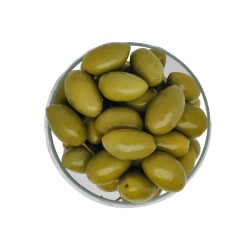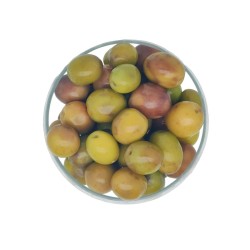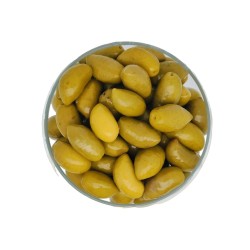
9 olives of Provence to discover
Discover the Delights of Olive Trees in Provence: Unique Varieties and Flavors
La Salonenque: The Elegant Pear of Salon de Provence
Dominating the Bouches-du-Rhône, the Salonenque olive, as its name suggests, has its origins in Salon de Provence. Its pear shape and homogeneous color make it a captivating visual spectacle. Protected by organic clay treatment, it becomes the star of both olive oil and table olives, especially the essential broken olives with fennel. A taste experience where fresh hazelnut and greenery intertwine harmoniously.
La Grossane: Olive Farming in Baux-de-Provence
The Grossane is an olive variety from the Bouches-du-Rhône, mainly produced in the Baux valley. Although it can be used to produce oil, it is primarily used as a black table olive. Vulnerable to certain biological pests, this variety is highly resistant to cold and drought. Its fleshy pulp makes it a versatile variety (oil and table black). Originating from the Bouches-du-Rhône, it now extends into Vaucluse. It produces a mild oil with black fruity notes, dominated by sweet almond and a very buttery mouthfeel. Grossane is the only authorized variety for the production of black olives with controlled designation of origin from the Baux-de-Provence valley. For the table, it is prepared pickled in salt. It ripens outdoors under the combined action of salt and cold, which removes its bitterness in a few days.
La Picholine: Elegant Asymmetry and Mediterranean Ardor
Implanted mainly in Gard, the Picholine is distinguished by its symmetry, rounded shape, and homogeneous color. Its elongated stem makes it recognizable among all. This olive, with its bitter and pungent taste, enriches olive oils with hints of green, plum, and vanilla. Enjoyed in brine, it also becomes a companion to aperitifs, adding a Mediterranean touch to our moments of conviviality.
La Verdale des Bouches du Rhône: A Rare Witness of the Terroir
Less common but firmly attached to the Bouches du Rhône, the Verdale is distinguished by its white points, called lenticels, adorning the fruit on a tree with a hanging port. Its mild oil with green aromas and buttery notes offers a rare taste experience, a declaration of love to the Provencal terroir.
L'Aglandau: Eponymous Variety, Mediterranean Excellence
Large and speckled with white points, the Aglandau, also called Blanquette or Béruguette depending on the region, is an emblematic variety of the French olive orchard. Its ardent taste, with notes of raw artichoke, banana, tomato stem, and green almond.
La Lucques: Crescent Moon of Languedoc-Roussillon
Unique in our selection, the Lucques, native to Languedoc-Roussillon, is distinguished by its crescent moon shape. Its green color and multiple white points make it easily recognizable. Contributing little bitterness to olive oil, it reveals aromas of avocado, butter, hay, raw artichoke, or even tomato stem. Worked when green, it becomes a delightful table olive.
La Caillette or Olive de Nice: Controlled Designation of Origin
The controlled designation of origin (AOC) "Olive de Nice" was officially created on April 20, 2001, by a decree signed by the relevant ministers. The European Union approved the creation of the PDO "Olive de Nice" on September 23, 2015. This recognition marked the culmination of the request that the SION (Interprofessional Union of Olive of Nice) had filed in 1996 with the National Institute of Controlled Designations of Origin (INAO). In 2004, a decree specifically defined the controlled designation of origin "Olive oil of Nice." Since then, the initial decree, in its consolidated version, concerns only olives and olive pastes.
La Bouteillan: Provencal Variety with Delicate Notes
La Bouteillan is an olive variety native to Aups in Provence. Today, mainly cultivated in the Var, Alpes-de-Haute-Provence, Alpes-Maritimes, Bouches-du-Rhône, and Vaucluse departments, this variety is also found in Egypt, Australia, and the United States. Synonymous, it is also called Redounan, Plant d'Aups, or Plant de Salernes. Characterized by its green fruity, it gives off vegetal or herbaceous aromas (hay notes) at tasting, evolving towards ripe pear notes.
La Tanche: Treasure of Nyons
La Tanche, also known as the Nyons olive, is an iconic variety of the region. Mainly cultivated in the Drôme, it offers a unique taste experience with subtle almond notes and a fleshy texture. Recognized for its delicate flesh and exceptional taste, La Tanche is a culinary treasure of Nyons.





